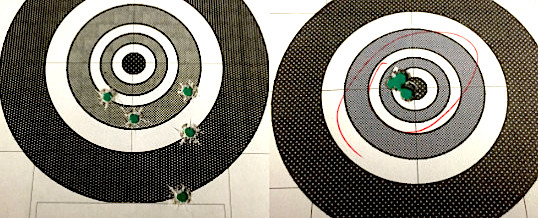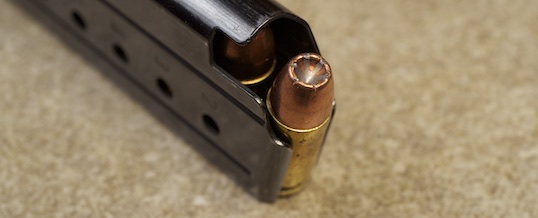
.22LR rifle reviews suck. Here’s why.
The other day I posted an article to social media about Eley’s newest .22LR hunting ammunition, suggesting that people who’ve never tried really good rimfire ammo haven’t a clue how much difference in performance it can make in their rifles. That comment reminded me of a .22 rifle “test” I read a couple of months ago, one which reinforced a simple fact:
.22 rifle reviews suck.
Darned near all of them, anyhow (and I’m only hedging my bets on the off chance that someone actually shows me one which doesn’t. I’ve never seen such a creature, mind you, but there might be one out there; it would be the Loch Ness Unicorn of .22 rifle reviews.**)
The review in question was for a relatively new rifle and, as I recall, the author shot a couple of different kinds of ammunition through the gun. One of them he referred to as “better” ammo: CCI Mini-Mags, while the other was bulk-pack ammo of some unremembered kind. The tone of the article suggested that he considered the Mini-Mags a sort of “premium” ammunition, which he referred to as his “go-to” load when he needed good accuracy. He showed some groups of the two loads and concluded that the gun shot best with the Mini-Mags.
The groups weren’t, in my estimation, even remotely indicative of the capabilities of the rifle. I know because he didn’t shoot enough different kinds of ammunition to find out!
Ammunition always matters, but especially with the .22LR
I’ve never met a rifle, rimfire or centerfire, which didn’t have an ammunition preference. Never, however, are the differences between worst and best as great as they are in the rimfire arena. With a centerfire the differences are usually small but measurable, but in a .22 rimfire it’s not unusual to find that the rifle shoots shotgun patterns with a load it doesn’t like and single holes with a load that it does.
Take, for instance, the two targets at the top of this article: same rifle, same targets, same distance (25 yards), same day, same weather, same shooter (me). The rifle was a Mossberg 44US equipped with a Lyman aperture sight in the rear and a globe sight of indeterminate manufacture at the front. All 5 rounds on each target were fired from the same stable prone position.
The target on the left side of the frame happens to be with the aforementioned author’s “accurate” ammo: CCI Mini-Mags. The target on the right side was with SK Standard Plus, which is a mid-line target ammunition for match practice (basically a slightly more affordable version of their Rifle Match load.) Note the rather huge difference in group size; these were the best representative of each. The Mini-Mag targets had considerable variation and it was easy to pick a “winner”, while the SK targets required a caliper to figure out which was the best!
(Just to derail the inevitable criticisms: the barrel was brushed with a dry brush before firing the first ammunition, and again whenever the ammunition was switched. I fired 50 rounds of each; 25 to season the barrel, a common recommendation amongst serious rimfire shooters, and then 5 groups of 5 rounds each for record.)
It’s worth noting that I shot a total of 5 different loads that day; these two represented the worst and the best. The others were somewhere in between, with most of them grouping much closer to the Mini-Mag than the SK. The SK was this gun’s “sweet spot”, at least of the ammunition I shot that day.
How do you know you’ve got the best?
Now if I were testing this gun for a magazine, and only shot two types of ammunition, what are the chances that I’d hit on the one which could really demonstrate what the rifle was capable of — especially if I limited myself to relatively cheap fodder? This is my big complaint: no one takes the time (or spends the money) to really test a rimfire rifle with enough different loads to find out what the gun will really do. They stop at a couple or maybe a few types without exploring the vast world of .22 ammunition. Nobody ever tests with a premium brand like SK or Eley.
When I get a new rimfire rifle I shoot it with as many different loads as I can find; to date, this particular gun has been through 11 different loads with the Mini-Mag being the cheapest. I’ll continue to test ammunition in this gun because I know that the right ammo can have a profound effect on the achievable group size. The design of this rifle makes it impractical for much field carry, so I limit my testing primarily to solid-nosed “match” type ammunition. That’s the type of ammunition which is likely to be capable of far better precision than high-velocity loads or hollowpoints and fits the expected use of the gun. Even with that self-imposed limitation I still have many more loads to try!
In contrast, a gun that’s more suited to carrying afield gets tested with game-appropriate ammo. I have one such rifle which shoots its best groups with CCI subsonic hollowpoints, for instance, and shoots Aguila subsonic hollowpoints — a very comparable load in every other respect — into what look like shotgun patterns. (I’d actually hoped for better from Aguila ammunition; I’ve shot many different loads from that company, up to and including their .22 Rifle Match, and I have yet to find any rifle which shoots its best with their products.)
Rimfire preferences are unpredictable, which is why you need to test!
This goes to show that the ammo any one gun likes isn’t predictable — at least not in my experience. Some time back I acquired a couple of bricks of the old pre-CCI Quik-Shok segmented rounds. That ammunition never not shot very well in any gun I tried; it was always at or very near the bottom of the list. One day, though, I had a chance to shoot a beautiful old pre-Microgroove Marlin 39. It’s a gun that’s probably close to 70 years old these days and I certainly didn’t expect it to do very well with the Quik-Shok; after all, nothing else ever had! Imagine my surprise when that ammunition consistently produced the best groups of the day from that old Marlin, groups that were far better than any I’d ever seen with that load. I would never have been able to predict that outcome, but at least I found someone who wanted to take those bricks off my hands!
I’ll admit that testing a .22 rimfire rifle properly is a time- and ammunition-consuming process. If I were testing centerfire rifles, where the differences between loads of similar bullets are usually far less obvious, I might in fact stop at a couple of loads. In my experience it’s pretty easy to get a good idea of a centerfire’s capabilities with decent mid-range ammunition. Not so in the rimfire world! I need to shoot many different loads to find that one which really allows the rifle to perform at its best, and more than once I’ve been ready to write off a rifle when I found the load that made it shoot well.
When I see an “accuracy” test of a rimfire rifle where the author hasn’t shot at least a half-dozen different loads, I don’t even bother reading. If the author’s “best” load is something that WalMart carries I know that he (or she) hasn’t done a sufficiently thorough job. Testing a .22 rifle properly is perhaps the hardest thing to do in the shooting world and it’s rare to find a reviewer who understands this.
Which is why (most) .22 rifle reviews suck.
– Grant Cunningham
**(P.S.: It shouldn’t need to be said, but I’m speaking of gun reviews in mainstream publications and websites; I’m sure you can find a good review in a specialty journal or shooting forum that caters to a small shooting niche, but that’s not what I’m addressing here.)
If you enjoy the information I post here, would you consider supporting my work on Patreon? I’d appreciate it, and you’d be doing your part to make this blog possible! Click here to join!
- Posted by Grant Cunningham
- On January 29, 2016



